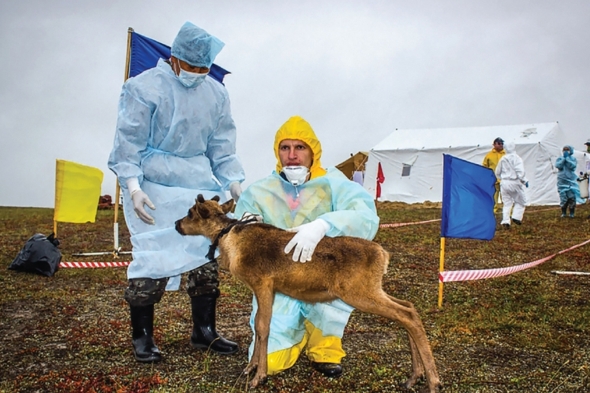As Earth Warms, the Diseases That May Lie Within Permafrost Become a Bigger Worry

By Sara Goudarzi | Scientific American
This past summer anthrax killed a 12-year-old boy in a remote part of Siberia. At least 20 other people, also from the Yamal Peninsula, were diagnosed with the potentially deadly disease after approximately 100 suspected cases were hospitalized. Additionally, more than 2,300 reindeer in the area died from the infection. The likely cause? Thawing permafrost. According to Russian officials, thawed permafrost—a permanently frozen layer of soil—released previously immobile spores of Bacillus anthracis into nearby water and soil and then into the food supply. The outbreak was the region’s first in 75 years.
Researchers have predicted for years that one of the effects of global warming could be that whatever is frozen in permafrost—such as ancient bacteria—might be released as temperatures climb. This could include infectious agents humans might not be prepared for, or have immunity to, the scientists said. Now they are witnessing the theoretical turning into reality: infectious microorganisms emerging from a deep freeze.
Continue reading on Scientific American.
